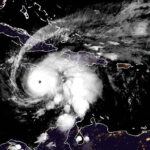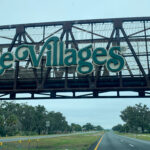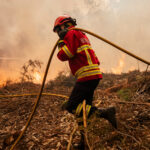Jeff Foley got a motorcycle for his 40th birthday last year followed by the weekend training course that gave him a New York license. Within the first few months, the 450-pound, low-slung cruising bike fell over twice while he was riding.
The chief injury was Foley’s pride. The first time, he was pulling out slowly and turning in a parking lot. The second time his wife was on the back.
“Both times were just as I was starting to get a little bit cocky,” Foley said. “I’m exceptionally fortunate that I dropped it at a standstill, not 50 or 60 miles an hour.”
The most dangerous time for motorcyclists by far is their first year, peaking in the first month, safety studies show. Another study suggests that licensing courses that fast-track the time it takes to get on the road don’t lower crash risks and may even raise them.
With the riding season getting under way in the Northeast, his second, Foley has become more cautious on his 800cc Intruder, which falls in the middle of the power range that manufacturers have generally ramped up over a generation. He’s also more experienced and quietly confident and hasn’t dropped the bike again.
He loves riding back roads but won’t go fast on turns he doesn’t know. He tries to contain his enthusiasm for what he calls an exhilarating and Zen pastime that lets him forget everything else.
“Even though a motorcycle is not a toy,” he said, “it brings out the child in me.”
For motorcycle riders, their first 30 days are about four times more risky than their entire second year, said Matthew Moore, vice president of the Highway Loss Data Institute. “It’s most likely inexperience. Operating a motorcycle is a fairly complex task.”
For example, he said, pulling out on a hill requires a half-dozen actions: balancing on one foot, braking to keep the bike from rolling back, shifting gear, feathering the throttle, watching for traffic and releasing the clutch.
An institute study showed 22 percent of nearly 57,000 collision claims from 2003 to 2007 occurred in the first 30 days after an insurance policy took effect. The claim rate dropped one-third in the second month and almost two-thirds after six months.
More than half the insurance claims on so-called supersport bikes occurred in the first three months. Often favored by younger riders, they have high power-to-weight ratios and can approach 200 mph.
An institute analysis of state-required training programs for riders under 21 in California, Florida, Idaho and Oregon found graduates’ collision claim frequency was 10 percent higher compared with 28 states without those requirements.
“Although this difference isn’t statistically significant, it contradicts the notion that motorcycle training courses reduce crashes,” the affiliated Insurance Institute for Highway Safety said.
One potential explanation is that riders completing a course are often fully licensed, which may shorten the learning period riding under a preliminary permit, Moore said. In New York, for example, passing a written test results in a one-year permit, which authorizes riding accompanied by a licensed motorcyclist. Learners then must pass a road test or successfully complete the two- to three-day course of classroom and hands-on instruction.
“The idea of me getting on a motorcycle without that class just would have been reckless,” Foley said. “I don’t know how else I would have learned to ride a motorcycle. My circle is not filled with people who ride bikes.”
Lisa Pallone said she and her husband had no problems on their 883cc Harley-Davidson Sportsters, the smallest bike from the U.S. maker of heavyweight cruisers, after buying them in 2008 and learning on smaller bikes in the training course. “We felt comfortable with ourselves but not to the point we were stupid. A lot of it might be our age,” she said. Pallone bought the bikes when her husband turned 40 and she was 48.
The nonprofit Motorcycle Safety Foundation’s basic rider course, offered in 48 states, has trained more than 6 million riders, about 400,000 last year, said Sherry Williams, director of quality assurance and research. It includes turning, braking, using the controls and emergency responses. It costs $275 in New York.
“We say we improve knowledge, skill sets and increase awareness,” said Ray Oakes, director of foundation training systems. “We can fix the ignorance part. We can’t fix stupid.”
One survey indicated 45 percent of U.S. riders have taken the course, though some learn during the course that motorcycles aren’t for them, Williams said. It has opened motorcycling to people who don’t know a rider who will teach them. Women in some states represent 20 to 30 percent of the students, and the survey showed they account for 10 percent of riders.
U.S. motorcycle deaths peaked in 2008 at 5,312, having doubled in a decade, according to federal data. The rise was attributed to increased ridership especially among baby boomers who ride for fun. Fatalities dropped to 4,469 a year later as sales dropped nearly 50 percent in a recession.
Topics USA Auto New York Training Development
Was this article valuable?
Here are more articles you may enjoy.


 Update: Hurricane Melissa Churns Toward Jamaica as Category 5 Storm
Update: Hurricane Melissa Churns Toward Jamaica as Category 5 Storm  Rivian Agrees to Pay $250 Million to Settle IPO Fraud Lawsuit
Rivian Agrees to Pay $250 Million to Settle IPO Fraud Lawsuit  World’s Largest Retirement Community Taps Muni Market to Help Build More Homes
World’s Largest Retirement Community Taps Muni Market to Help Build More Homes  Catastrophe Bonds’ Huge Market Gains Put Reinsurers on Backfoot
Catastrophe Bonds’ Huge Market Gains Put Reinsurers on Backfoot 

